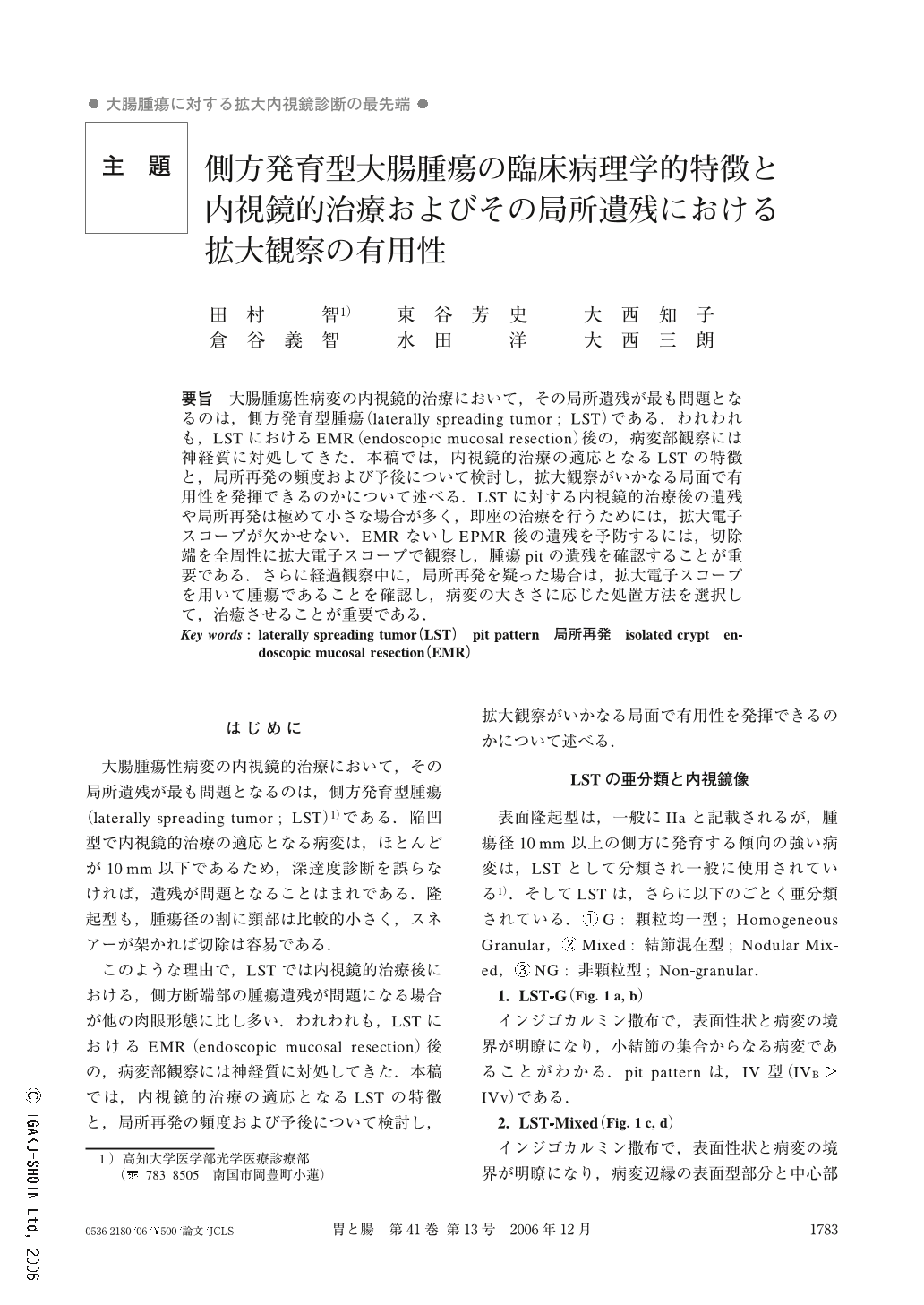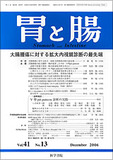Japanese
English
- 有料閲覧
- Abstract 文献概要
- 1ページ目 Look Inside
- 参考文献 Reference
要旨 大腸腫瘍性病変の内視鏡的治療において,その局所遺残が最も問題となるのは,側方発育型腫瘍(laterally spreading tumor ; LST)である.われわれも,LSTにおけるEMR(endoscopic mucosal resection)後の,病変部観察には神経質に対処してきた.本稿では,内視鏡的治療の適応となるLSTの特徴と,局所再発の頻度および予後について検討し,拡大観察がいかなる局面で有用性を発揮できるのかについて述べる.LSTに対する内視鏡的治療後の遺残や局所再発は極めて小さな場合が多く,即座の治療を行うためには,拡大電子スコープが欠かせない.EMRないしEPMR後の遺残を予防するには,切除端を全周性に拡大電子スコープで観察し,腫瘍pitの遺残を確認することが重要である.さらに経過観察中に,局所再発を疑った場合は,拡大電子スコープを用いて腫瘍であることを確認し,病変の大きさに応じた処置方法を選択して,治癒させることが重要である.
The recognition of a new concept of colonic lesions and the advent of the video endoscope have shown that the composition of a colon tumor is not only a “polyp” type but also an endophytic growth tumor. These include depressed type lesions, and laterally spreading tumors (LST). The difficulty in endoscopic diagnosis of these two types ― depressed type and LST ― depends mainly on their gross configuration, and they are usually detected endoscopically by a faint redness or roughness on their surface. Histopathologically, the majority of LSTs were adenomas or intramucosal carcinomas, even though the tumor sizes were larger than 20 mm in diameter. Previous reports indicate that almost all LSTs are treatable by endoscopic mucosal resection (EMR), and also that magnifying endoscopic observation is necessary to prevent the recurrence of resected tumors.

Copyright © 2006, Igaku-Shoin Ltd. All rights reserved.


